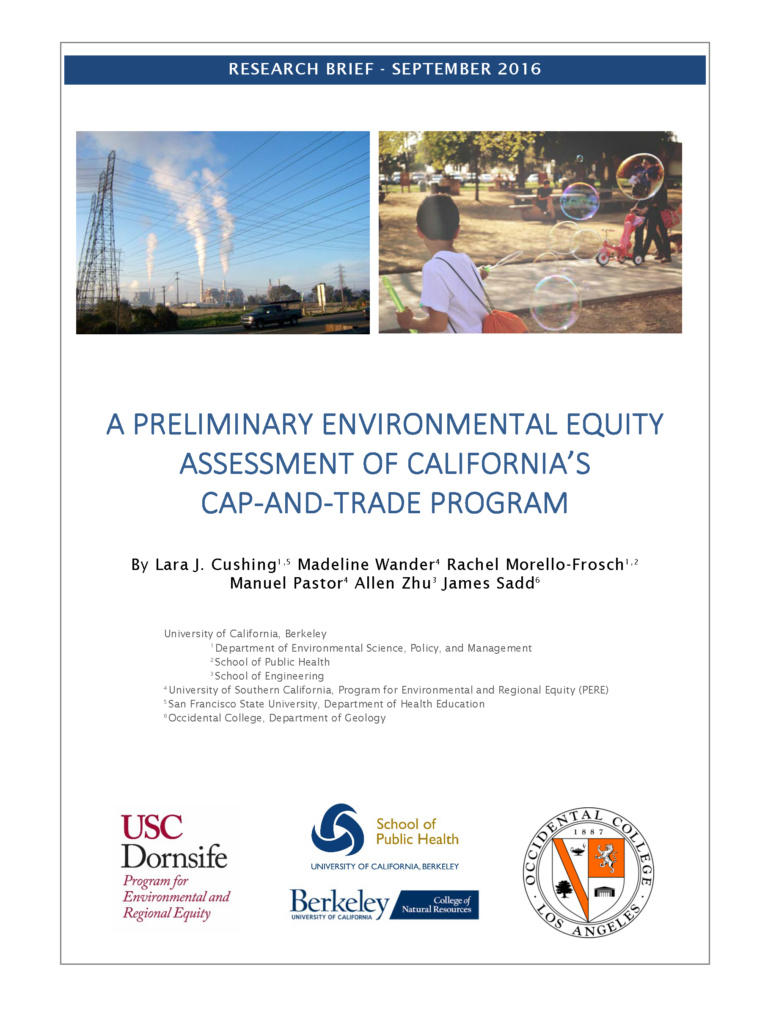
September 14, 2016
By Lara J. Cushing, Madeline Wander, Rachel Morello-Frosch, Manuel Pastor, Allen Zhu, and James Sadd
Please note: reports dated earlier than June 2020 were published under our previous names: the USC Program for Environmental and Regional Equity (PERE) or the USC Center for the Study of Immigrant Integration (CSII).
California’s cap-and-trade program is a key strategy for achieving reductions in greenhouse gas (GHG) emissions under AB32, the California Global Warming Solutions Act. It not only offers the possibility of reducing GHGs, which cause climate change, but also reducing other accompanying pollutants, like particulate matter (PM10), the directly harm the health of nearby residents.
In this research brief, we use data from the California Environmental Protection Agency and the U.S. Census to assess inequalities in the location of GHG-emitting facilities and in the amount of GHGs and PM10 emitted by facilities regulated under cap-and-trade. We also provide a preliminary evaluation of changes in localized GHG emissions from large point sources since the advent of the program in 2013.
Key findings from our analysis indicate that:
- Regulated GHG-emitting facilities—including those that emit the highest levels of both GHGs and PM10—tend to be located in neighborhoods with higher proportions of residents of color and residents living in poverty. This suggests that further emissions reductions from GHG emitting facilities could enhance the public health and environmental equity co-benefits of cap-and-trade.
- In-state GHG emissions have increased, on average, among several industry sectors since the advent of cap-and-trade. One particular driver of the pattern is the electrical sector in which GHG reductions were largely due to reductions in imported electricity (and in the GHG-intensity of those imports) while in-state GHG emissions actually rose.
- Many high-emitting companies have used out-of-state “offset” projects to meet compliance obligations. California’s largest GHG emitters were more likely to use offset projects to meet their emissions obligations under cap-and-trade.
- Of the top-emitting facilities in terms of both PM10 and GHGs, 61 percent reported increases in localized GHG emissions in 2013-14 relative to 2011-12, versus 51 percent of facilities overall. The neighborhoods near the top-emitting facilities that increased emissions were poorer and had a higher share of people of color than neighborhoods near top-emitting facilities that decreased their emissions.
Ongoing evaluation of emissions reductions—and more accurate and accessible data—will be critical to assessing the equity impacts of the cap-and-trade program and improving regulatory implementation of California’s climate change laws.



